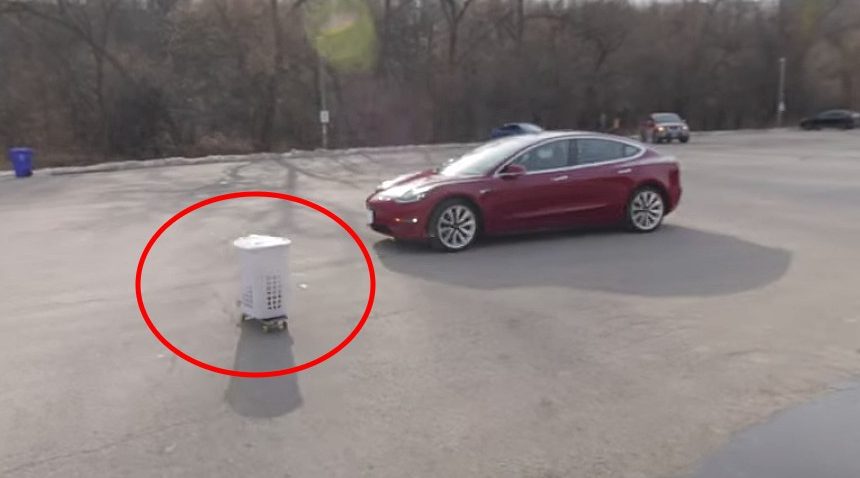

Tesla Model 3
Watch Tesla Smart Summon react to a runaway “shopping cart” in latest obstacle test
Tesla Model 3 owner and electric car enthusiast Kevin Rooke performed an experiment with Smart Summon, showcasing its ability to react to moving obstacles in a simulated runaway shopping cart test.
Rooke performed a separate Smart Summon test in mid-November, where he put the software through its paces with an intense trap that would summon the vehicle into a river.
While Rooke noted his first test as helpful in terms of teaching him how well the Summon software works, he wanted to take it a step further. “I went back for another round of testing, I brought a bunch more objects with me, but this time, I had a twist,” Rooke said. “I wanted to see how a Tesla might react when the objects presented in front of it, all these obstacles, were moving.”
In the latest test, Rooke built a makeshift shopping cart with a skateboard on top of a laundry basket. Rooke used Summon’s “GO TO TARGET” button to have his Model 3 move in a straight line. While it was moving, he pushed the shopping cart in front of the vehicle. His Model 3 successfully recognized the approaching obstacle as it came closer to the driver’s side front quarter panel. In a second test of the shopping cart, the Model 3 once again successfully avoided the obstacle. It is safe to say that if this were a real shopping cart in a grocery store parking lot, colliding with it would do some cosmetic damage to the car’s exterior. Summon’s ability to avoid this object is beneficial for Tesla owners as it could save money in the event of a freely-rolling shopping cart.
The next test was a series of long, cylindrical balloons that resembled a tree branch. Rooke attached these to a string and stood far away from the car. As the Summon operated Model 3 recognized these balloons, it stopped with plenty of room to spare.
The more interesting tests were with basketballs and soccer balls. “We are going to do two tests, a bounce test…and then we’re just going to do a rolling test afterward to see what the sensors pick up,” Rooke said. The car did not recognize the basketball on the first bouncing test, but did see it on the second attempt. While the car made contact with the basketball, it did successfully stop immediately afterward.
The rolling test of the basketball proved to be where Summon is in need of improvement. The vehicle’s sensors did not recognize the ball, ran over it, and popped it. Rooke subsequently tested other balls of smaller dimensions, but they yielded the same results.
Impressed by the performance of Summon when confronted with the shopping cart, Rooke shared some thoughts at the end of the video. “Smart Summon will stop for large obstacles that are moving even if they happen to come from the side of the car,” Rooke said. “If there is a rogue shopping cart in a mall parking lot, you do not want your car driving into it. You want your car to stop. That was the correct decision.” When talking about the basketball test however, Rooke certainly feels that a ball of that size should be recognized by the vehicle’s sensors, and it is evident Tesla could use some improvement in this category. “Imagine a toddler crawling behind a car or a small animal crossing in front of the path of the car. Those are things that you want the car to stop for and recognize,” he added.
Noting that the previous test did display that it recognized small pylons, it is not correct to assume the car’s sensors do not recognize them at all. It is more reasonable to assume that the feature just needs to be improved upon. Judging on Tesla’s frequent software updates, the company will likely confront these concerns and do what it can to fix them.
You can watch Kevin Rooke’s second Smart Summon test below.

News
Tesla dominates in the UK with Model Y and Model 3 leading the way
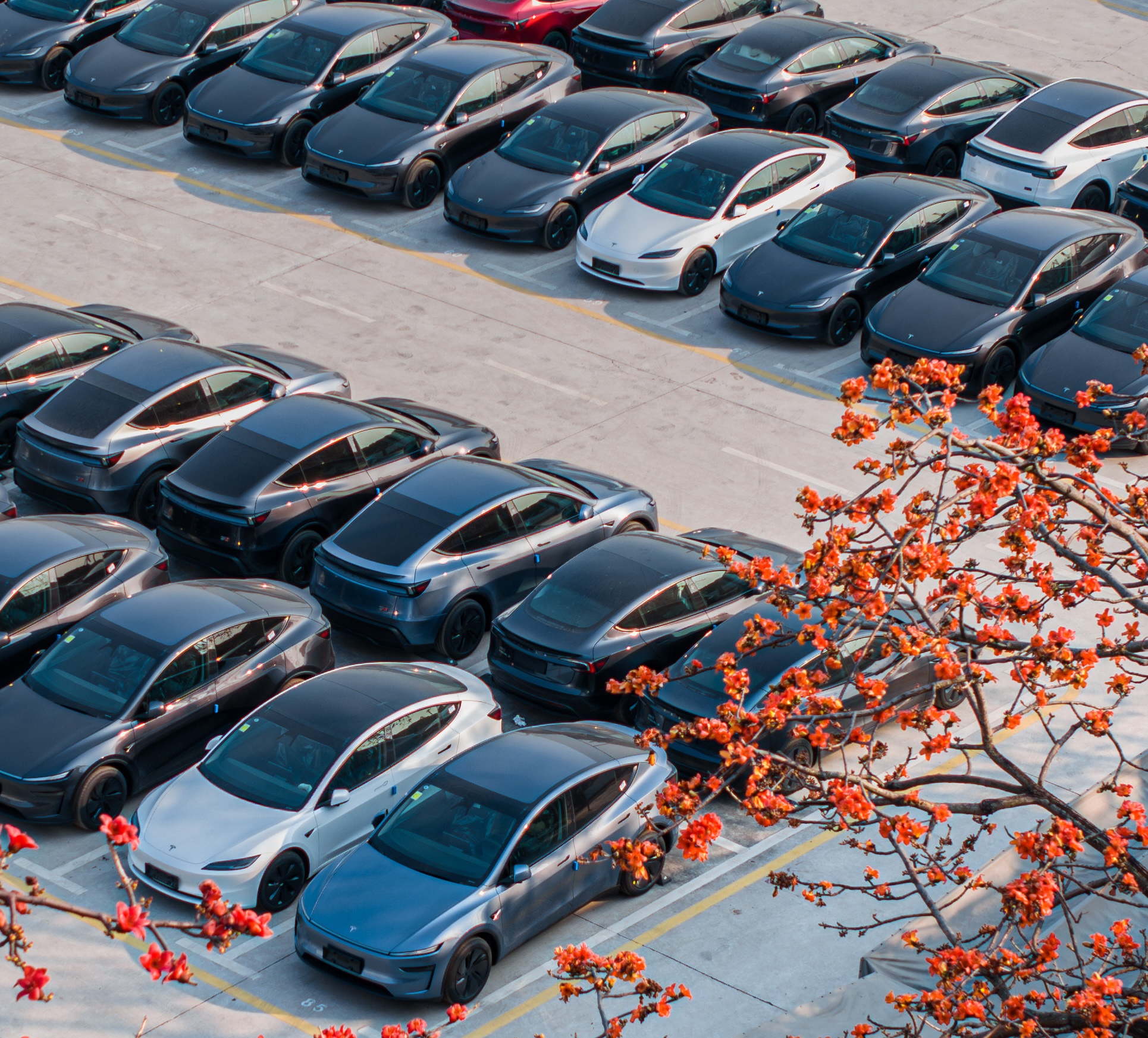
Tesla is dominating in the United Kingdom so far through 2025, and with about two weeks left in the year, the Model Y and Model 3 are leading the way.
The Model Y and Model 3 are the two best-selling electric vehicles in the United Kingdom, which is comprised of England, Scotland, Wales, and Northern Ireland, and it’s not particularly close.
According to data gathered by EU-EVs, the Model Y is sitting at 18,890 units for the year, while the Model 3 is slightly behind with 16,361 sales for the year so far.
The next best-selling EV is the Audi Q4 e-tron at 10,287 units, lagging significantly behind but ahead of other models like the BMW i4 and the Audi Q6 e-tron.
GOOD NEWS 🇬🇧 Tesla is absolutely crushing the UK electric vehicle market in 2025 💥
The numbers are in, and the dominance is clear. With an impressive amount of 42,270 vehicles delivered year-to-date, the brand now commands a solid 9.6% market share of the total auto market 🆒… pic.twitter.com/dkiGX9kzd0
— Ming (@tslaming) December 18, 2025
The Model Y has tasted significant success in the global market, but it has dominated in large markets like Europe and the United States.
For years, it’s been a car that has fit the bill of exactly what consumers need: a perfect combination of luxury, space, and sustainability.
Both vehicles are going to see decreases in sales compared to 2024; the Model Y was the best-selling car last year, but it sold 32,610 units in the UK. Meanwhile, the Model 3 had reached 17,272 units, which will keep it right on par with last year.
Tesla sold 50,090 units in the market last year, and it’s about 8,000 units shy of last year’s pace. It also had a stronger market share last year with 13.2 percent of the sales in the market. With two weeks left in 2025, Tesla has a 9.6 percent market share, leading Volkswagen with 8 percent.
The company likely felt some impact from CEO Elon Musk’s involvement with the Trump administration and, more specifically, his role with DOGE. However, it is worth mentioning that some months saw stronger consumer demand than others. For example, sales were up over 20 percent in February. A 14 percent increase followed this in June.
News
Tesla Model 3 and Model Y dominate China’s real-world efficiency tests
The Tesla Model 3 posted 20.8 kWh/100 km while the Model Y followed closely at 21.8 kWh/100 km.
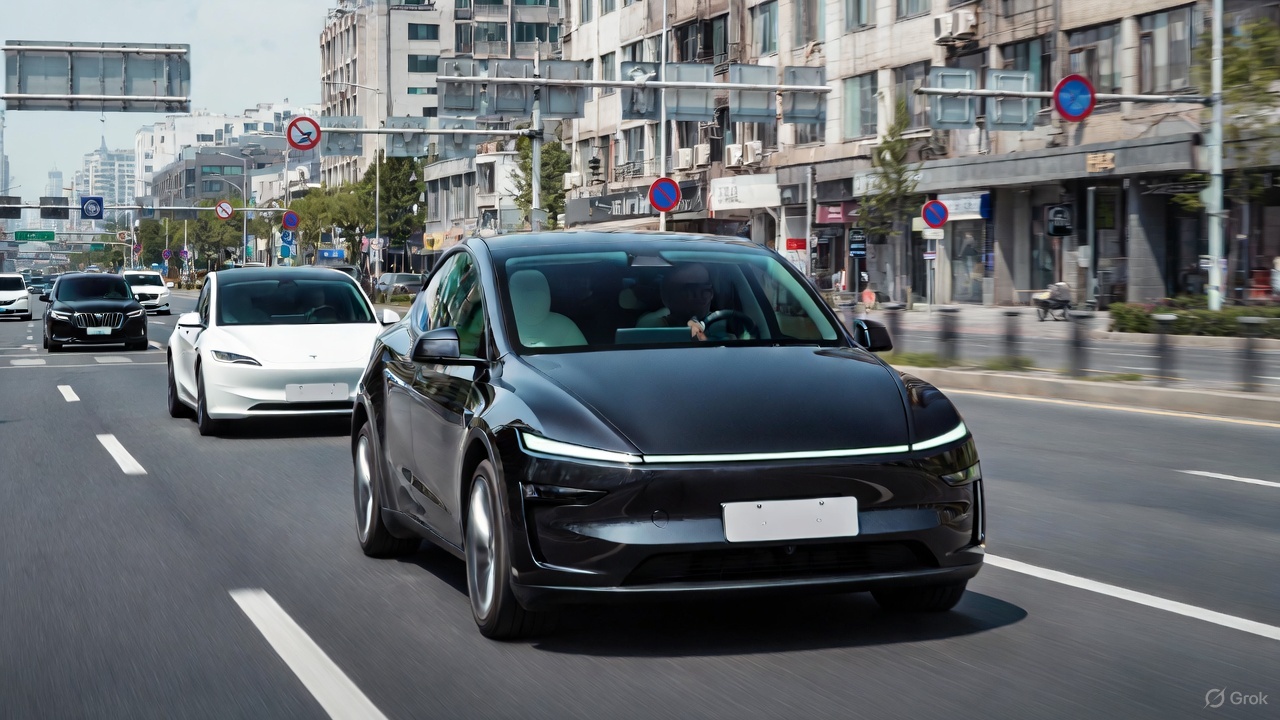
Tesla’s Model 3 and Model Y once again led the field in a new real-world energy-consumption test conducted by China’s Autohome, outperforming numerous rival electric vehicles in controlled conditions.
The results, which placed both Teslas in the top two spots, prompted Xiaomi CEO Lei Jun to acknowledge Tesla’s efficiency advantage while noting that his company’s vehicles will continue refining its own models to close the gap.
Tesla secures top efficiency results
Autohome’s evaluation placed all vehicles under identical conditions, such as a full 375-kg load, cabin temperature fixed at 24°C on automatic climate control, and a steady cruising speed of 120 km/h. In this environment, the Tesla Model 3 posted 20.8 kWh/100 km while the Model Y followed closely at 21.8 kWh/100 km, as noted in a Sina News report.
These figures positioned Tesla’s vehicles firmly at the top of the ranking and highlighted their continued leadership in long-range efficiency. The test also highlighted how drivetrain optimization, software management, and aerodynamic profiles remain key differentiators in high-speed, cold-weather scenarios where many electric cars struggle to maintain low consumption.
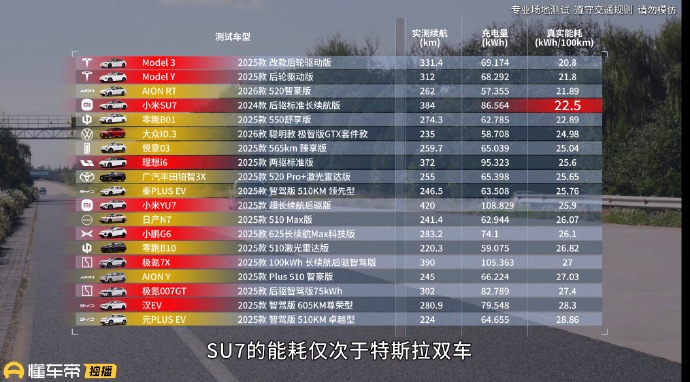
Xiaomi’s Lei Jun pledges to continue learning from Tesla
Following the results, Xiaomi CEO Lei Jun noted that the Xiaomi SU7 actually performed well overall but naturally consumed more energy due to its larger C-segment footprint and higher specification. He reiterated that factors such as size and weight contributed to the difference in real-world consumption compared to Tesla. Still, the executive noted that Xiaomi will continue to learn from the veteran EV maker.
“The Xiaomi SU7’s energy consumption performance is also very good; you can take a closer look. The fact that its test results are weaker than Tesla’s is partly due to objective reasons: the Xiaomi SU7 is a C-segment car, larger and with higher specifications, making it heavier and naturally increasing energy consumption. Of course, we will continue to learn from Tesla and further optimize its energy consumption performance!” Lei Jun wrote in a post on Weibo.
Lei Jun has repeatedly described Tesla as the global benchmark for EV efficiency, previously stating that Xiaomi may require three to five years to match its leadership. He has also been very supportive of FSD, even testing the system in the United States.
News
Tesla Model 3 and Model Y named top car buys in Norway
Despite growing competition from European and Korean brands, both models stood out for their balance of price, performance, and everyday usability.
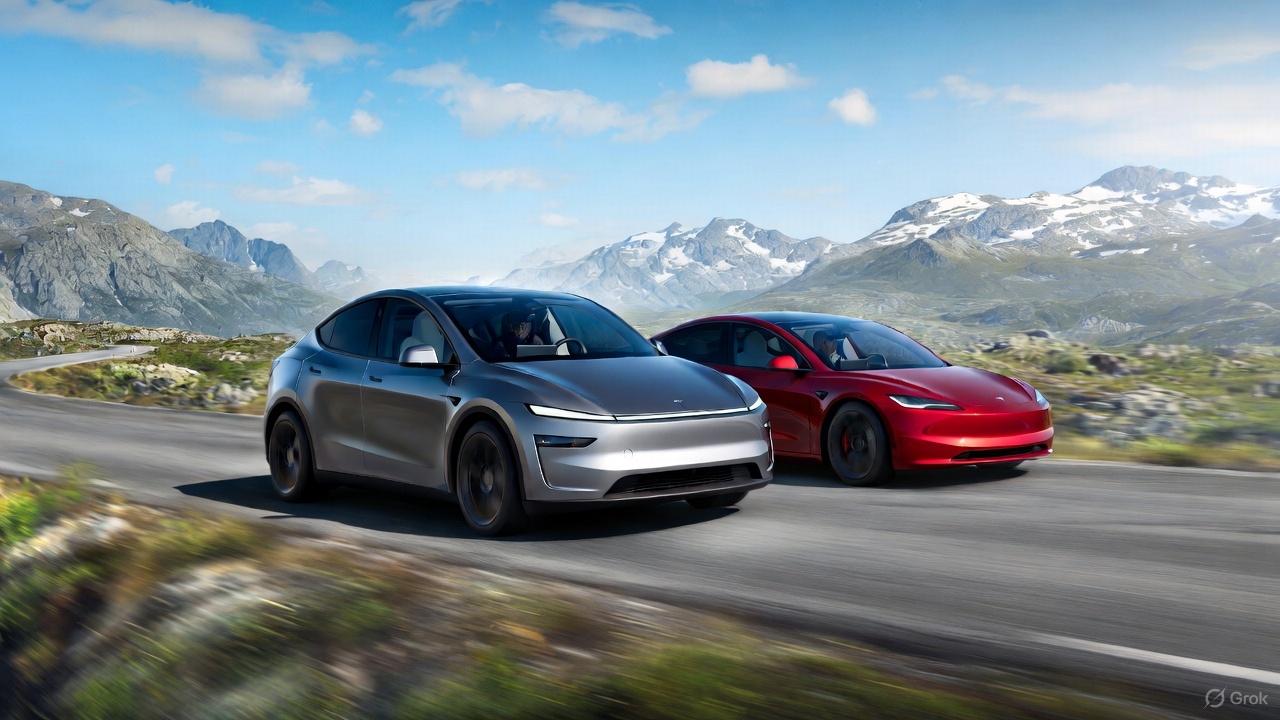
Norway’s annual roundup of the best car purchases featured Tesla’s two main sellers this year, with the Model 3 and Model Y securing top positions in their respective segments.
Despite growing competition from European and Korean brands, both models stood out for their balance of price, performance, and everyday usability. The verdict comes as electric vehicle adoption remained above 95% of new vehicle sales in the country.
Tesla Model 3 strengthens its value position
Among compact EVs, the Tesla Model 3 maintained its position as the best overall buy thanks to its strong blend of performance, efficiency, and updated features. Reviewers noted that every trim offered compelling value, especially with the all-electric sedan’s improved cabin ergonomics and the return of the turn-signal stalk, which was one of the few previous complaints among drivers.
The Model 3’s mix of long-range capability, low operating costs, and responsive handling has continued to set the benchmark for compact EVs in Norway. While competitors from Hyundai, Volkswagen, and Peugeot have narrowed the gap, Tesla’s price-to-capability ratio has remained difficult to beat in this segment, Motor.no reported.
“The Model 3 clearly offers the best value for money in the compact class, no matter which version you choose. Now it also gets the turn signal lever back. This eliminates one of the few flaws in a driving environment that many believe is the best on the market,” the publication wrote.
Tesla Model Y claims its crown
The Tesla Model Y emerged as Norway’s top family-car purchase this year. The latest refresh introduced improvements in ride quality, styling, and interior materials, allowing the Model Y to deliver a more premium driving experience without a substantial price increase.
Reviewers praised its spacious cabin, strong safety profile, and practical range, all of which reinforced its appeal for families needing an all-purpose electric crossover. The Model Y remains especially notable given its continued popularity in Norway even as Tesla faces declining sales in other global markets.
“The Model Y is back as the winner in the family class. The upgrade in the new year was even more extensive than expected. It is a slightly more elegant and significantly more comfortable Model Y that solidifies its position as Norway’s best car purchase in the most important class,” the Norwegian motoring publication noted.








